Mayor Pete to President Pete? It's crazy, but he thinks his ideas aren't.
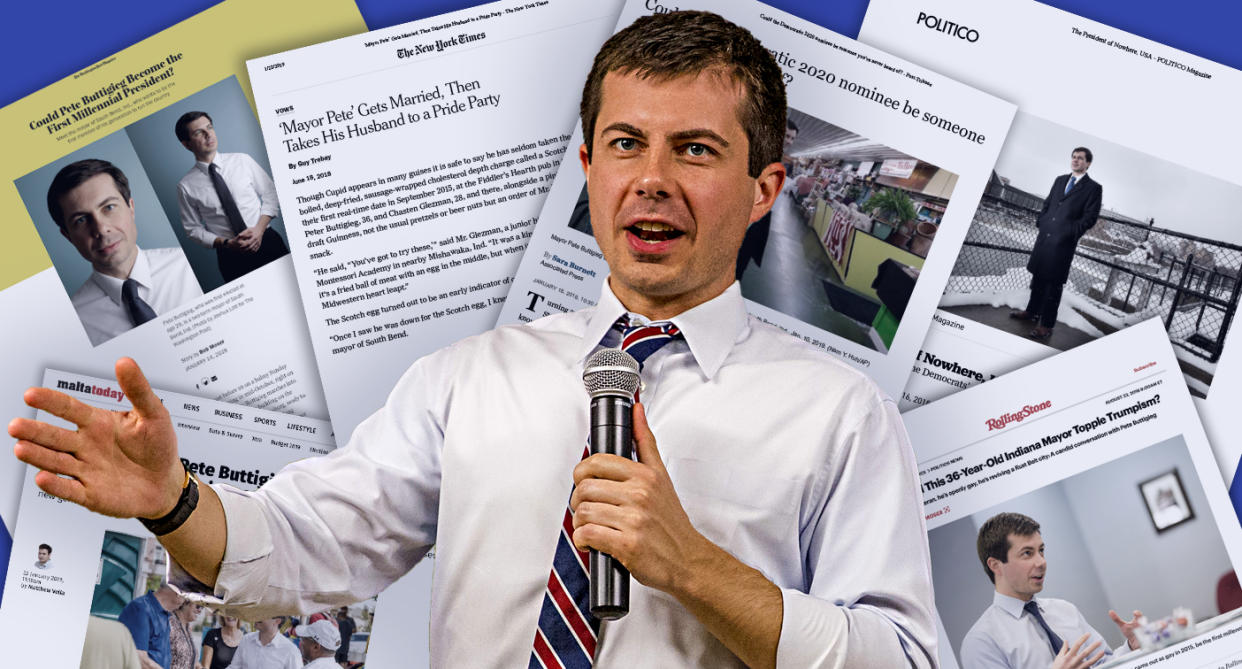
Mayors may make excellent presidents. That is, if they ever get the chance. So far, however, the mayor’s office hasn’t exactly been a pipeline to the Oval Office. Only three presidents have ever served as mayors — Andrew Johnson, Grover Cleveland and Calvin Coolidge — and all three had plenty of experience in between, so that by the time they assumed the presidency, their time at the helm of Greenville, Tenn. (Johnson), or Northampton, Mass. (Coolidge), was little more than a shoot of youthful ambition.
For the most part, the American voter is suspicious of mayors, maybe because for so many years in the 20th century, cities were seen as sites of dysfunction and squalor, if not violence and decay. Rudy Giuliani discovered this the hard way in 2008, when “America’s Mayor” — as he had come to be called after 9/11 — finished an inconsequential third in the Florida primary and promptly dropped out of the race for the Republican presidential nomination. He may have had what his predecessor John Lindsay famously called “the second toughest job in America,” but the voters in Wauchula, Fla., didn’t seem to care.
The 2020 election may be different. Cities have been resurgent for at least the last 20 years. Your aunt has done a walking tour of Brooklyn; your second cousin blogs about Pittsburgh’s first-rate dining scene. The urban renaissance has gone through so many iterations, and is now so far beyond Portland, Ore., and Austin, Texas, that it has settled on — really, you should wait for it — Fort Myers, Fla., and Midland, Texas, two of the fastest-growing cities in the country.
Which brings us to South Bend, Ind., whose 37-year-old mayor would like to make the improbable jump from 227 West Jefferson Boulevard to 1600 Pennsylvania Avenue, and, in so doing vault over perhaps more than a dozen Democratic governors, U.S. senators and perhaps a billionaire or two, not to mention mayors of much bigger cities, including Bill de Blasio of New York and Eric Garcetti of Los Angeles. Then there would be the small matter of defeating the sitting president.
Mayor Pete Buttigieg signaled on Wednesday morning that he intends to do just that, announcing that he has launched a presidential exploratory committee “because it is a season for boldness and it is time to focus on the future.”
To his credit, Buttigieg gets how insane this is. His counterargument is that presidential ambition is fundamentally insane, no more so for the Indiana mayor with a funny name than, say, a U.S. senator from Illinois with an even funnier name and no achievement other than a fairly obvious public stance against invading Iraq.
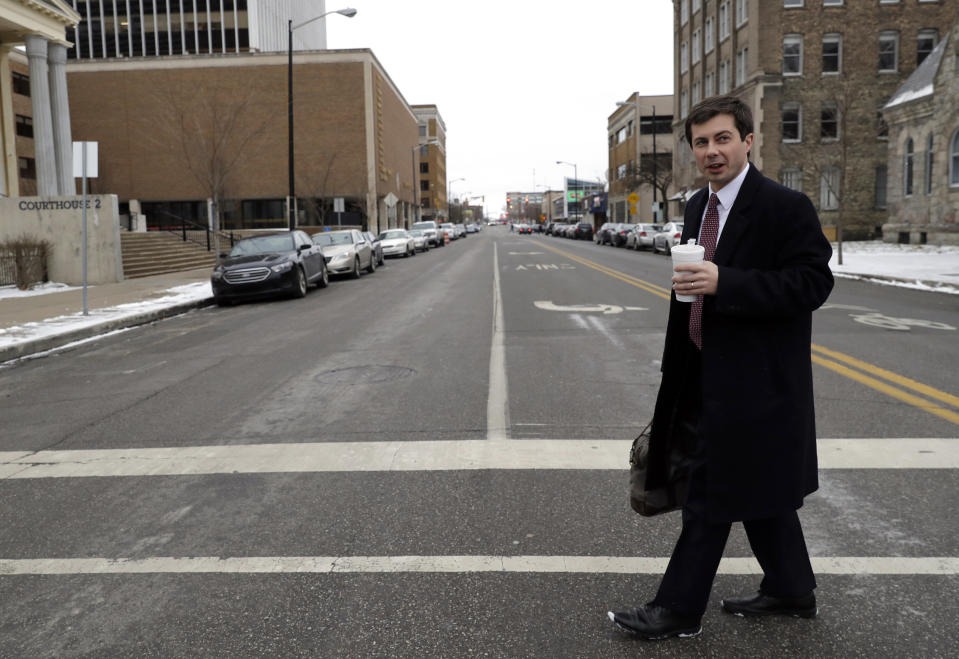
His name, which is Maltese, means “the owner of chickens” and it is pronounced booty-JIDGE, though he is just fine if you call him “Mayor Pete,” since pretty much everyone already does. And as he made clear during a recent conversation with Yahoo News, a Democratic primary field large enough to fill out a football roster is not going to deter him.
“The previous understanding of what hurdles or bars there are to the presidency have been wiped out by Donald Trump,” says Neera Tanden, president of the Center for American Progress and a close ally of the Clintons. Though she would not speculate on Buttigieg’s chances, she welcomed him and any other potential candidate “to contribute to the debate about what it means to be a Democrat.”
Wednesday’s announcement was widely expected. The two-term mayor declared last December that he wasn’t running for reelection. Right after that announced he headed for Iowa, presumably to introduce potential first-in-the-nation primary caucus voters to his brand of pragmatic progressivism. It was his fourth time there since the fall of 2017.
On a recent winter afternoon, Buttigieg was in Manhattan to record an audio version of his forthcoming book, “Shortest Way Home: One Mayor’s Challenge and a Model for America’s Future,” the cover of which shows Buttigieg on a South Bend street, head reverentially bowed, rolling up his shirt sleeves. That evening, Buttigieg attended an event on the Upper East Side hosted by Molly Jong-Fast, the novelist and anti-Trump activist. In attendance was New York City Council speaker Corey Johnson, who with Buttigieg is probably the most prominent openly gay elected leader in the United States.
Buttigieg is a study in contrasts, as are his policies. He is small but broad-shouldered, mayor of the nation’s 301st most-populous city, yet unafraid of showing his intellectual ambition. “This is not a time to be arguing over the appropriate calibration of the butter subsidy,” he says.
A graduate of Harvard College and a Rhodes Scholar, Buttigieg does not bother hiding his own ambition. He is obviously restless, annoyed at his fellow Democrats for having few ideas other than opposing Trump. The Democrats used to be “the intellectual party” but Buttigieg laments that today “it’s the Republicans who can get you from Hayek and Ayn Rand all the way to Paul Ryan.” But having also served in Afghanistan as a naval intelligence officer, he likes ideas that are practical, ideas that are not merely dreams.
His message to Democrats is classically mayoral, to think big but to also think local, recalling the approach Michael Bloomberg — himself a potential 2020 candidate — had to running New York City. He approvingly cites Bloomberg’s 2003 ban on smoking in bars and restaurants, once regarded as New York’s death knell. But Bloomberg refused to bow to the doomsayers, and when he left City Hall 10 years later, the smoking ban remained one of his great policy triumphs.
“When you follow facts where they lead, it often takes you to places that are fairly radical,” Buttigieg says. We debate, for a little while, whether he is a progressive pragmatist or a pragmatic progressive. He says that the distinction is, as commonly purveyed and understood, “bulls***.”
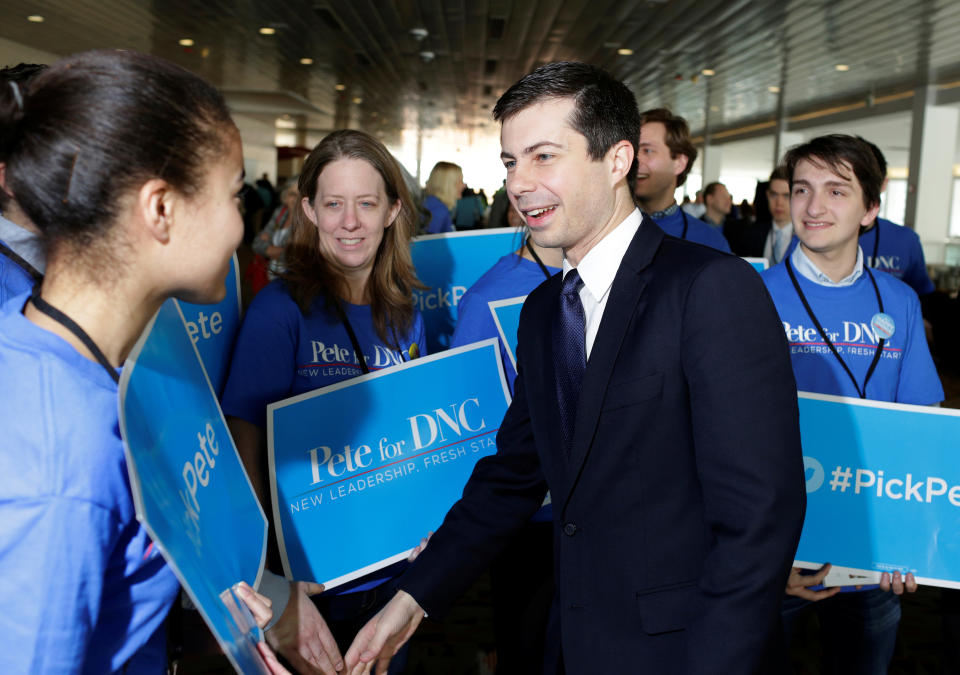
Buttigieg does propose some fairly radical solutions, even though he acknowledges that the platform for a not-yet-declared presidential run remains inchoate. He wants, for example, to make every home in the United States a “net zero” energy consumer, a goal he intends to achieve by retrofitting homes with solar roof paneling: “Uncle Sam is gonna mail you a kit,” he says.
And he explains how Democrats must come to understand that no matter how well-meaning, job retraining programs are not what the Midwest needs. “If you understand yourself as a machinist,” Buttigieg says, “and some well-meaning center-left program comes along and tells you, ‘From now on, you’re going to be a nurse’s aide,’ that just may not be how you think you fit in the world.”
Politics may be the art of the possible, but Buttigieg believes that is too often an excuse for thinking small. So far, he shows no sign of succumbing to that ailment. He wants Washington, D.C., to become a state, which is something that Democrats have long wanted and Republicans have long resisted. Give statehood to Puerto Rico too. And abolish the Electoral College, which favors low-population states. Even more, he argues they are entirely reasonable goals that are pragmatic. Only, he warns, “pragmatism is not the same thing as incrementalism.”
This is the kind of talk that has excited Democrats for two years. Some weeks after Trump was elected president, the New Yorker published an article about how Barack Obama was “reckoning” with what had transpired on Nov. 8, not to mention with what would come on Jan. 20. Obama named four promising Democrats. Three of them were well known: Tim Kaine, the U.S. senator from Virginia who had just finished a run as Hillary Clinton’s vice presidential candidate; Kamala Harris, the new junior senator from California; and Sen. Michael Bennet of Colorado. The fourth name was close to totally unknown, and it belonged to Buttigieg.
Buttigieg was, at the time, a second-term Democratic mayor of the most rusted-through Rust Belt place imaginable. South Bend had once been defined by an enormous Studebaker campus, which by 2016 was nothing more than a rusted hulk, a tribute to greatness lost. And yet, somehow, the voters there had not succumbed to a politics of grievance, or at not nearly as much as did their counterparts across the Midwest. Clinton had won in St. Joseph County, which includes South Bend and its environs, by 231 votes; exactly a year before, Buttigieg won reelection with 80 percent of the electorate on his side.
Buttigieg did not let the Democratic Party’s crisis — or the name-check from Obama — go to waste. In January 2017, he ran for chair of the Democratic National Committee. He lost that race to Clinton ally Tom Perez, but without squandering the sheen of a presidential quasi-endorsement.
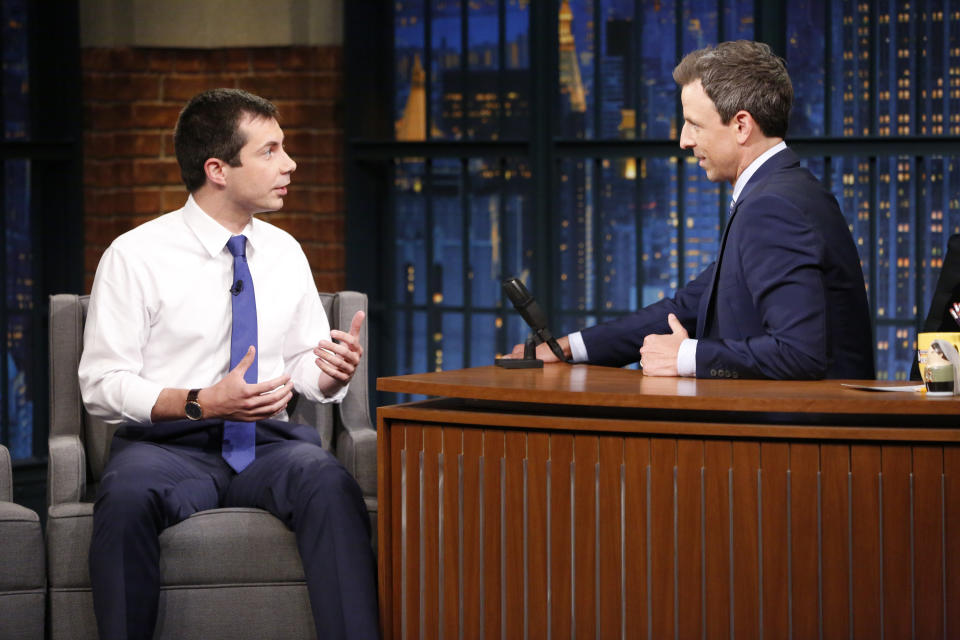
And while South Bend had not been garnering many Brooklyn or Austin comparisons, it had under Buttigieg avoided the fate of cities like Peoria, Ill., and Toledo, Ohio. South Bend’s airport gained “international” status in 2014 and added many domestic routes, a sign of Buttigieg and others’ efforts to keep their city in the global economic conversation. The old Studebaker plant was well on its way to becoming a major technology hub (Silicon Bend, here we come?). The defunct car company had even given its name to the brand of business most closely associated with urban resurgence: a brewery, in this case, Studebaker Brewing Company, whose motto is “Hops and History.” The population under Buttigieg showed a steady if modest growth of about 1 percent per year since 2012. That has been helped along by the rise of data centers in the city in the greater South Bend region, which is also home to Notre Dame.
And the mayor himself remained accessible, intelligent and thoughtful as his visibility rose throughout 2017. So the good press kept coming: “He’s a rock star. He represents all that this party is about,” a DNC official told Business Insider. “The Mayor of Nowhere, USA,” a Politico headline declared in early 2018. He has been on “Late Night with Seth Meyers” and progressive darling “Pod Save America,” hosted by Obama alumni. In the summer of 2018, he met with Obama. Several months after that, Buttigieg announced that he wasn’t running for a third term.
Buttigieg acknowledges “generational impatience” within the Democratic Party. Other potential 2020 candidates include Rep. Seth Moulton of Massachusetts, who is 40 years old and also a military veteran, and Beto O’Rourke, the former Senate candidate from Texas, who is 46.
There is also the matter of gender and race. Buttigieg is a white male at a time when when Democrats are yearning for more diverse candidates. “There’s a lot of interest in having a ticket that better represents America,” says Tanden of the Center for American Progress. Though he would be the first openly gay man to seek a major-party nomination, Buttigieg — who married his partner last summer — plays down the historic nature of a potential candidacy. “I’m not interested in being the gay candidate any more than I am the gay mayor,” he says.
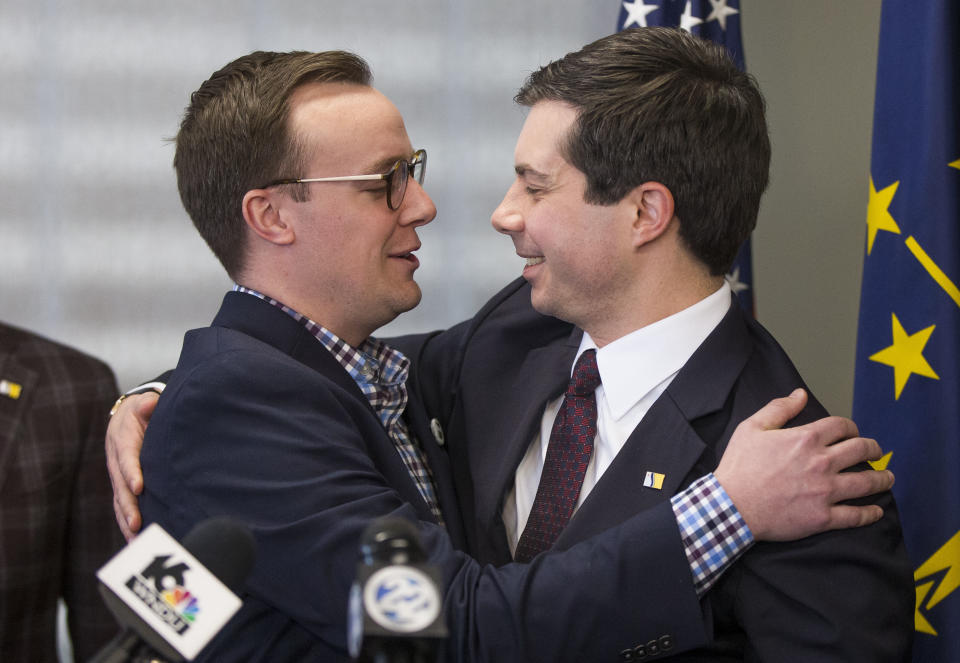
In the primaries, Buttigieg may have a relatively easy time in Iowa, an overwhelmingly white Midwestern state. As an underdog, he might do well in New Hampshire too. The first real test — for him, and for most other candidates — will be in South Carolina, where he will have to appeal to an African-American electorate that has reasserted its power in the Democratic Party. “He has a high mountain to climb,” says Antjuan Seawright, a Democratic strategist in that state.
It will be the first state, Seawright says, where a candidate will have to deploy a massive ground operation and invest in sophisticated media buys, while playing to a racially and economically heterogeneous population. Buttigieg will have to “measure three times and cut once with his message and his approach” if he hopes to survive until Super Tuesday, Seawright warns.
There will be candidates with more money, Buttigieg knows. There will be candidates who are more famous. Buttigieg knows this too. He believes that he can prevail on the basis of ideas, ideas grounded in Midwestern sensibility but not lacking in ambition. “We shouldn’t filter all of our proposals through whether they can be plausible tomorrow,” Buttigieg says. “If we do, we’re always gonna be doing piecemeal, incremental stuff.”
_____
Read more from Yahoo News:
2020 prospect Sen. Klobuchar: It’s ‘difficult to imagine’ voting for Trump AG pick
Someday, Donald Trump will be a former president. The mind boggles.
Despite denials, documents reveal U.S. training UAE forces for combat in Yemen
How the government closure is affecting Americans nationwide
Biden and Warren have a history. If he runs, it may come back to haunt him.
See our 2018 year-end features >>>
_____
Read more from Yahoo News:



